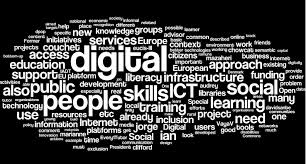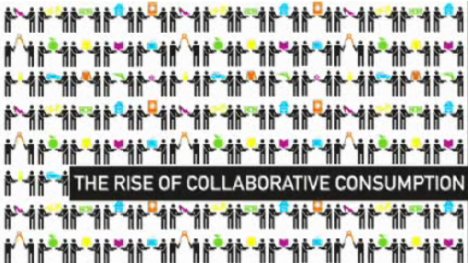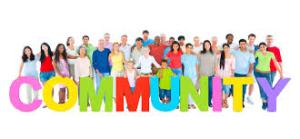The title of this blog encapsulates the approach I am taking on helping to modernise the Diversity Strategy in the council I work for, more of that in a moment. It’s a while since Government Digital Service published a good blog on a checklist around digital inclusion and there have been many others since.
Still enthused by our #notwestminster movement our Kirklees Democracy Commission I’m genuinely excited by the future. My excitement is slightly tempered by the nagging thought that Digital has the potential, if we’re not careful, to perpetuate inequalities in society, for example:
- who gets access
- who is digitally literate
- does everyone know the rules of engagement
- are organisations prepared to be truly open
Many other aspects exist, however for me this is where the on-line and off-line worlds collide in respect of encouraging Diversity and tackling Inequality. Back to my current thinking on this ‘off-line’. In the Einstein-ish equation Diversity + Inclusion = Productivity, the final element vis-à-vis public service is not about profit but focusses on improved services.
Beyond tokenism
Diversity has traditionally been thought of in terms of the ‘visible’ differences between people, such as gender, race, disability etc. with a focus on eliminating discrimination based on these differences.
Diversity is about those differences, but this narrow definition ultimately short-changes what it really means. Diversity is about what makes each of us unique and includes our backgrounds, personality, life experiences and beliefs. In fact, all of the things that make us who we are. It is a combination of the visible and invisible differences that shape our view of the world, our perspective and our approach.
This broader view of diversity is encapsulated by the idea that diversity is really about diversity of ‘thought’[i] – where different perspectives and capabilities are the point of difference, rather than our visible characteristics. Whether it be off-line or on-line I believe we need innovative ideas from anywhere and anyone to transform services, however this must be open to all!
So what does this mean for the business case for diversity? A lot. It offers a more inclusive and engaging discussion than one focused on visible diversity, which is often duality and therefore divisive. And it creates a new line of inquiry about the nature of the business case, shifting the question from ‘How can increasing gender, racial, LGBT, disability, age diversity etc. help us improve business outcomes?’ to ‘How rich is our knowledge bank?’, ‘Do we have the variety of perspectives necessary to deal with complex problems and create innovative solutions?’ and ‘Are we fully valuing and leveraging the potential of all our communities and employees?’
These questions need to be answered in the ‘digital’ world as much as the ‘physical’ one.
Diversity is leveraged through inclusion
But more than just changing the business case conversation, focusing on “diversity of thought” enables us to see people as individuals rather than as representatives of a group and this helps us to find common ground when working together. It provides a focal point that is applicable across different cultural and national contexts. And while research on diversity and performance often focuses on visible diversity, the case connecting diversity of thought to engagement and innovation is growing and appears more solid than the causal link between gender, race, LGBT etc. and business success.
NB: recognition still needs to be given to the fact that certain groups have and continue to face far greater institutional, direct and indirect discrimination than others in society.
Simply ‘having’ diversity is not enough
Diversity is leveraged through ‘inclusion’ – the extent to which individuals feel valued and included by an organisation, a process or way of working. This is achieved through inclusive leadership, namely by ensuring all communities and employees have the opportunity to fulfil their individual and combined potential. According to Miller and Katz (2002): “Inclusion increases the total human energy available to the organisation. People can bring far more of themselves to their jobs because they are required to suppress far less”[ii].
Diversity and inclusion are therefore related but different concepts. You can have a diverse workforce without inclusion; and inclusion without diversity[iii]. But one without the other is only half of the business performance equation. Again, put simply: diversity + inclusion = improved business outcomes. It also makes organisations more innovative; very well articulated in this TED Talk: “How diversity makes teams more innovative“.
It is therefore a reasonable inference to make that if organisations can see a more granular link between diversity and business outcomes through the lens of inclusion, and this link resonates with personal experiences, then the business case for diversity will be more tangible.
And this will help to close the perception gap between diversity and the bottom line.
Improved customer insight and service
Any organisation should be committed to providing high quality services through understanding and meeting individual customer needs and aspirations. We know that these differ from customer to customer, so we will adjust our services accordingly to ensure that they all have a fair and open chance to use and benefit from our services.
So, our commitment means understanding and meeting the needs of customers regardless of their diversity.
The diversity of a workforce can and should provide invaluable customer insight and lead to more effective and targeted services and/or provision to meet customer or the communities’ needs – again helping to deliver the ‘bottom line’.
To Conclude…
Whether it be internal to an organisation or external collaboration with communities we need to embrace Diversity as core to our business, whatever that may be. I believe if we adopt such an approach within public services via Digital greater creativity, ideas and solutions will emerge to address the challenges we face, resulting in benefits such as:
- more citizen-led and shaped services
- better informed and engaged communities
- increased involvement, representation and engagement
- greater involvement in the democratic process
- community resilience and capacity building
The digital tools are out there and growing in numbers all the time, some good examples here in the Creating Digital Communities report by the Tinder Foundation. It’s our responsibility to make digital tools and mechanisms accessible to all and maximise the assets/ideas that everyone possesses.
My enthusiasm has never been higher but we must avoid a ‘Digital Divide’; if not the potential of democracy and equity on-line will be undermined! Sentiments excellently outlined here in a presentation ‘Digital inclusion – by default or intervention?’ –
——————————————————
[i] 2010 USA State of Workplace Diversity Management Society for Human Resource Management.
[ii] Miller, F.A. & Katz, J.H. (2002) The Inclusion Breakthrough Berrett-Koehler Publishers, CA USA.
[iii] Kandola, B. (2009) The Value of Difference – Eliminating bias in organisations Pearn Kandola Publishing, Oxford UK.











 careered through the Liverpool defence in injury time of the final game of the season. Within seconds, the midfielder had bundled the ball over a bamboozled Bruce Grobbelaar and my beloved Arsenal had wrenched the title from the home side’s grasp. This sentiment is how I feel about society right now.
careered through the Liverpool defence in injury time of the final game of the season. Within seconds, the midfielder had bundled the ball over a bamboozled Bruce Grobbelaar and my beloved Arsenal had wrenched the title from the home side’s grasp. This sentiment is how I feel about society right now.